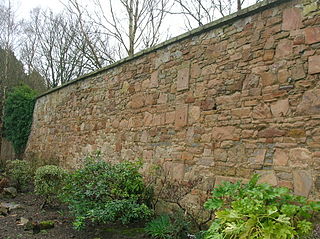 I'm heading off to celebrate my 30th wedding anniversary with my dear husband. No Iceland for us, alas, but if I see something lovely, I will bring back pictures. In the meantime, enjoy this post from 2015.
I'm heading off to celebrate my 30th wedding anniversary with my dear husband. No Iceland for us, alas, but if I see something lovely, I will bring back pictures. In the meantime, enjoy this post from 2015.What lives in a dark hole in the garden, coming out to till the soil and tend the plants? No, I’m not talking about gnomes or hobbits. I’m talking about bothy boys.
Bothy boys appear to be a mid- to late-nineteenth century phenomena in England. Those wealthy families with extensive gardens often required a herd of gardeners to tend things. I hadn’t thought about the fact that some garden tasks, like protecting spring plants from a sudden frost or maintaining greenhouses before the widespread use of electricity, were twenty-four-hour efforts. Particularly on a massive estate, sending your garden workers home to the nearest village between shifts simply wasn’t feasible.
While the head gardener might have his own quarters on the estate, the under gardeners, journeymen, and apprentices were sometimes housed in bothys. A bothy is a small house of sorts, with an emphasis on the sorts. The term is used for waystations on Scottish trails. But on the great estates, bothys served as home to as many as a dozen workers. Some bothys were no more than a dirt cellar carved out of a hillside with piles of blankets for bedding. Upscale bothys were made of stone or brick and boasted dormitory-style living with a sitting room. The picture at top isn’t actually a bothy--I couldn’t find a royalty-free picture, alas.
The “boys” who lived in the bothy were not always boys--workers ranged from their teens to their early thirties. They worked hard all day and sometimes into the night, depending on the time of year and needs of the gardens. The best houses provided instructors one night a week to teach the fellows enough botany to care for the plants, enough Latin to recognize the proper names, and enough drawing to sketch plan, placements, and the occasional odd specimen.
Produce from the garden appears to have been part of their wages, and they used it barter for other things, like meat for the table and eggs and cream from the local farmer. The universal feeling seems to be that these fellows had better things to do than cook for themselves; the better estates had a woman come in to clean once a week and cook once a day. Romantic that I am, I was already planning story ideas about a plucky Irish cook and a strapping bothy boy. But then I read that the position of bothy cook was generally given to an elderly female servant who was considered past her prime.
I bet she still kept those bothy boys in line.





No comments:
Post a Comment